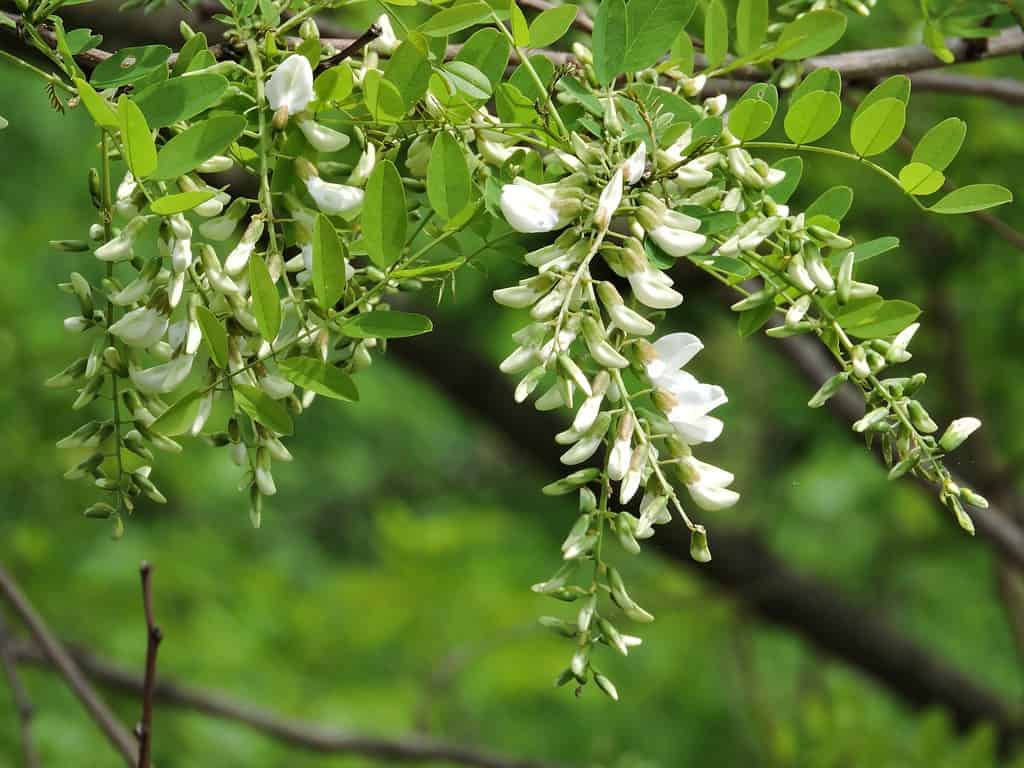
Trees are indispensible for life as we know it. They clean our air, shade our streets, anchor our soil, and bring beauty to our landscapes. Beyond their environmental services, trees carry deep cultural weight. In the United States, for example, the mighty oak stands as a symbol of strength and resilience, enshrined as the national tree by both Congress and the president.
But sometimes, trees also fall from grace. The black locust tree is now regarded as an invasive pest in most places, but not many know how this tree helped America survive its harsh early history. Without it, the US would have been a
What is the black locust tree?
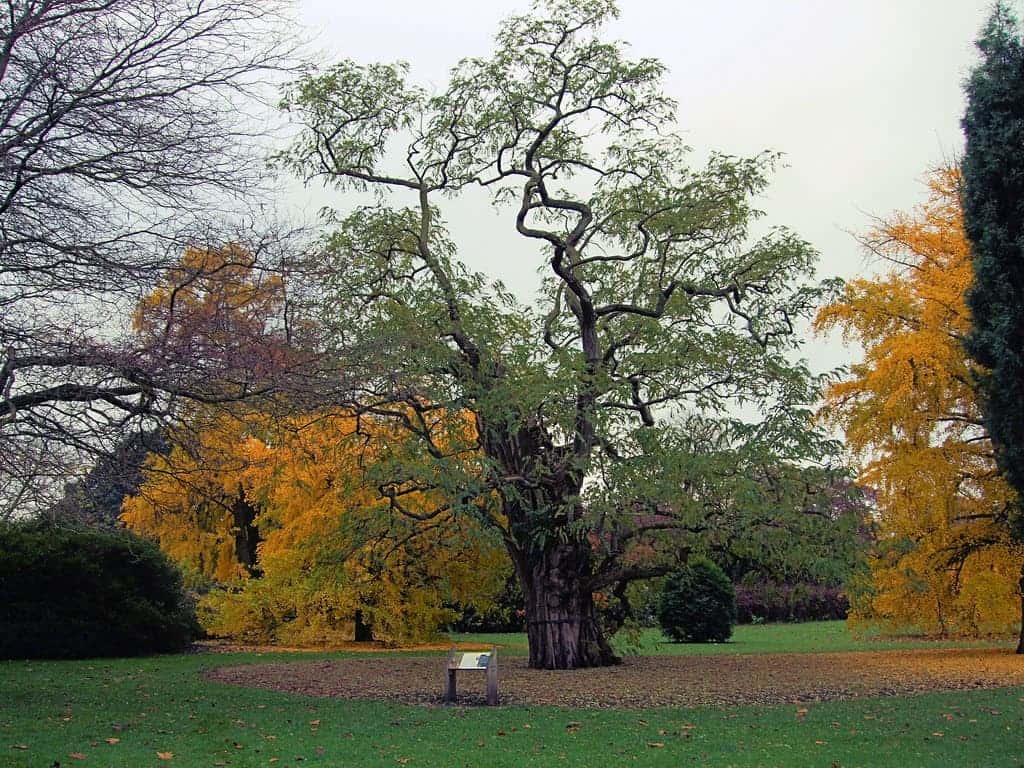
The black locust tree (Robinia pseudoacacia) is a fairly common tree native originally to the Appalachian Mountain range. In time, it has become naturalized throughout the United States, southern Canada, and even in parts of Europe and Asia. The tree can reach 40 to 100 feet (12 to 30 meters) in height at maturity. Bark saplings are green and usually have a smooth texture, but when they mature, the texture turns dark brown and deeply furrowed, with flat-topped ridges.
Its flowers are white and fragrant and appear in drooping clusters in May and June. At first glance, it looks like an Acacia tree hence the scientific name pseudoacacia, which means ‘false Acacia’. So far, nothing out of the ordinary. But this tree carries a hidden history.
Its journey begins in the Appalachian Mountains of North America, where Indigenous peoples valued it for its hard, rot-resistant wood. It was perfect for tools, building, and even arrow shafts. European settlers quickly caught on, and by the 17th century, black locust seeds had crossed the Atlantic. The tree’s rapid growth and durable timber made it a favorite for shipbuilding, fence posts, and mine props. In France, it was even planted along royal avenues, and legend credits the botanist Jean Robin (for whom the genus is named) with introducing it to Paris around 1601.
A hundred years after its founding, historian Mark Catesby (author of the “Natural History of Carolina, Florida and the Bahamas Islands“) visited these structures and, believe it or not, these are still standing and perfectly sound. Yep, the black locust tree did an extraordinary job at supporting these buildings and it gave early colonizers the durability they so desperately needed.
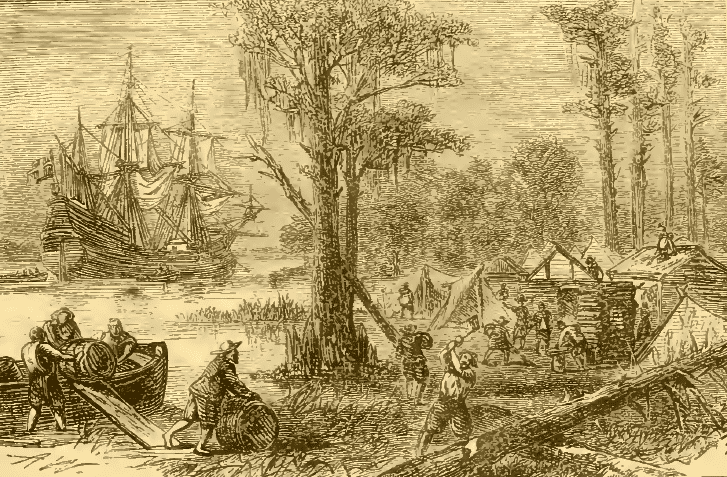
Environmentally, the tree is pretty useful as well.
It locust tree fixes nitrogen from the atmosphere quickly, explaining its quick growth. Farmers loved it because it was useful when establishing new farms, setting up windbreaks and shelters, as well as providing shade for animals while grazing.
The tree was also found to support nutrition in other crops, working as a “nurse” tree for crops like barley. But most importantly, it was (and still is) the most rot-resistant wood that grows in the American climate. This makes it extremely useful for outdoor builds like fenceposts, hope poles, outdoor furniture, decks, and other projects that require weatherproof materials. It’s also very high-density and durable and has high heat tolerance.
At some point, the tree fell out of favor in most populations in North America. Until the colonists came, that is.
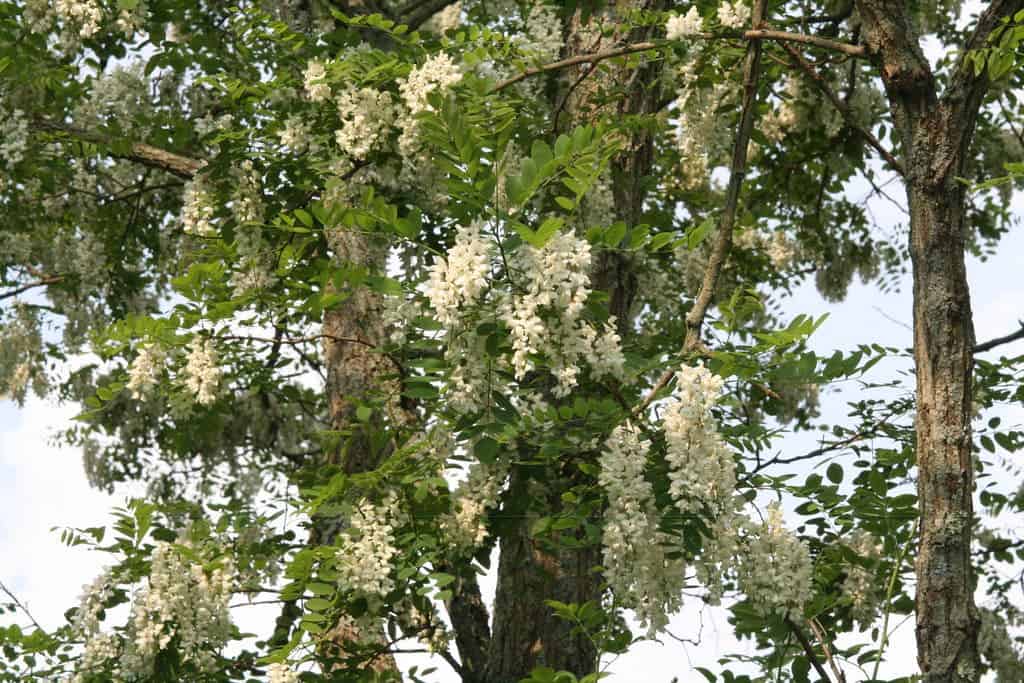
The colonial times brought more fame to this tree as it played a big role in the conquest of America in the War of 1812 against the British fleet. It was believed that the British Navy’s ships were built with oak nails while American ships used locust nails. As a result, when the cannonballs from the American troops hit, the British ships easily fell apart. Meanwhile, the American ships reinforced with black locust pegs had much more durability.
After a few battles, the British realized how much of a difference the black locust tree was making — so much so that the very next year they began importing tons of locust nails to rebuild their navy ships. By 1820, the Philadelphia market was exporting 50,000 to 100,000 locust nails to England per year.
The news of this tree’s great potential spread far and wide, which made a lot of people want to grow it. Hungary was also aware of the awesomeness of the black locust tree. They imported a lot of seeds and engaged in a wide propagation project that remains very impactful to this day. The project was so successful that nearly 20% of the forest in the country now comprises black locust trees.
Losing its luster
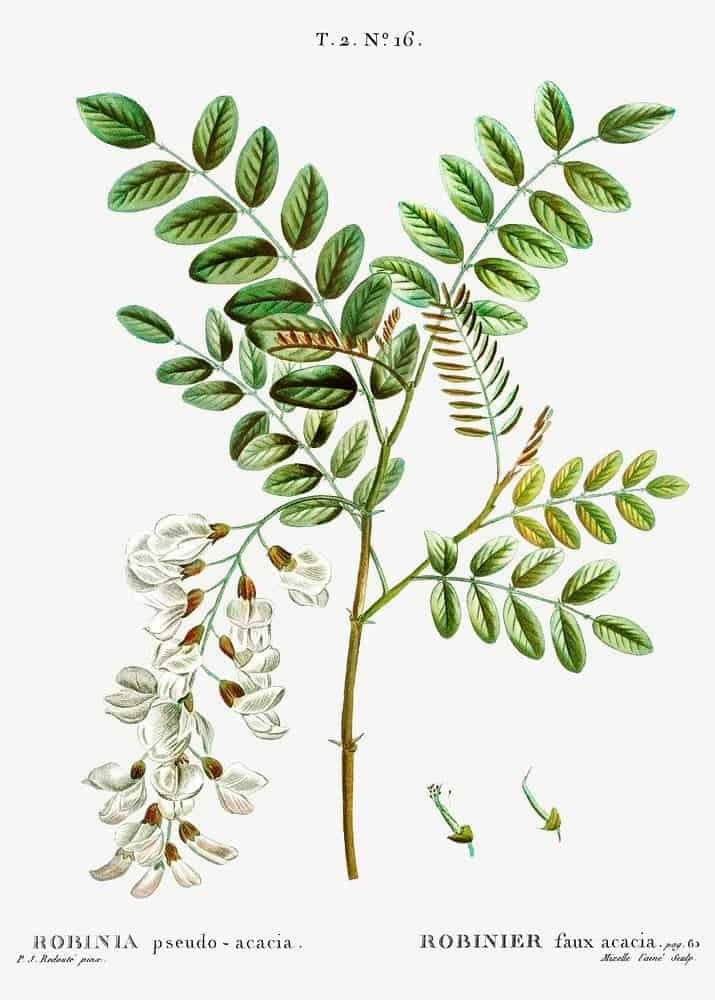
Though valued historically, this tree today is considered by many as a pest due to its rapid opportunistic growth. It has posed a serious threat to the native vegetation in prairies, oak savannas, and forest edges, where it’s out-competing them for light and nutrients.
The black locust tree is an invasive plant in many parts of the world — and ironically, it has invasive qualities even on the continent to which it is native. Basically, the black locust tree can outcompete local wildlife and lead to a reduction in local biodiversity.
However, rather than seeing it as a pest, we can still regard it as a useful species. The tree is a so-called “pioneer species”, which means it’s one of the first to move into areas that have been affected by disasters (like forest fires, for instance). This makes it useful for a number of environmental applications.
Black locust trees are very efficient in stabilizing erosion-prone slopes hence they can be utilized to reclaim mining sites. Additionally, the tree’s roots fix nitrogen, its flowers are a source of pollen and honey for bees, and the plant has good nutritional value for livestock feeding. Lastly, we should not forget its sturdy timber which has already been tested over time as seen in ship construction, railroad ties, poles, and many more.
“The black locust tree can be economically valuable and offer certain environmental benefits, but its dominant and invasive nature in Europe can have an adverse impact on biodiversity,” a European Commission report notes. “A recent study, which presents an overview of this species’ ecological and socio-economic impacts in Central Europe, recommends tolerating the tree in some areas and eradicating it in others, in order to balance its co-existence with people and nature.” The report also highlights that in some areas, the tree seems to produce no negative impact and may even help the local environment.
The black locust tree is still an area of active research. A recent study drew inspiration from its properties to develop sturdier and more resilient building materials, and especially in urban areas, they can be a useful way to cool down citizens during heat waves. Another recent study emphasized that the black locust tree is pretty vulnerable in the changing climate.
“Some species behaved predictably. “The black locust grew faster in cooler, wetter cities,” the authors write in an article for The Conversation. “As cities plan for a hotter future, our research will help urban planners choose the toughest, most resilient street trees.”
A tree of contradictions, the black locust tree has withstood the changing times. From being adored to now being considered a pest, it surely has come a long way. Rather than seeing the bad side, it would be better to make the most of its uses. With proper propagation protocols and careful management, the black locust tree may be able to reclaim its glory and help mankind once more.
The article was originally published in September 2023 and was edited to include additional information.






